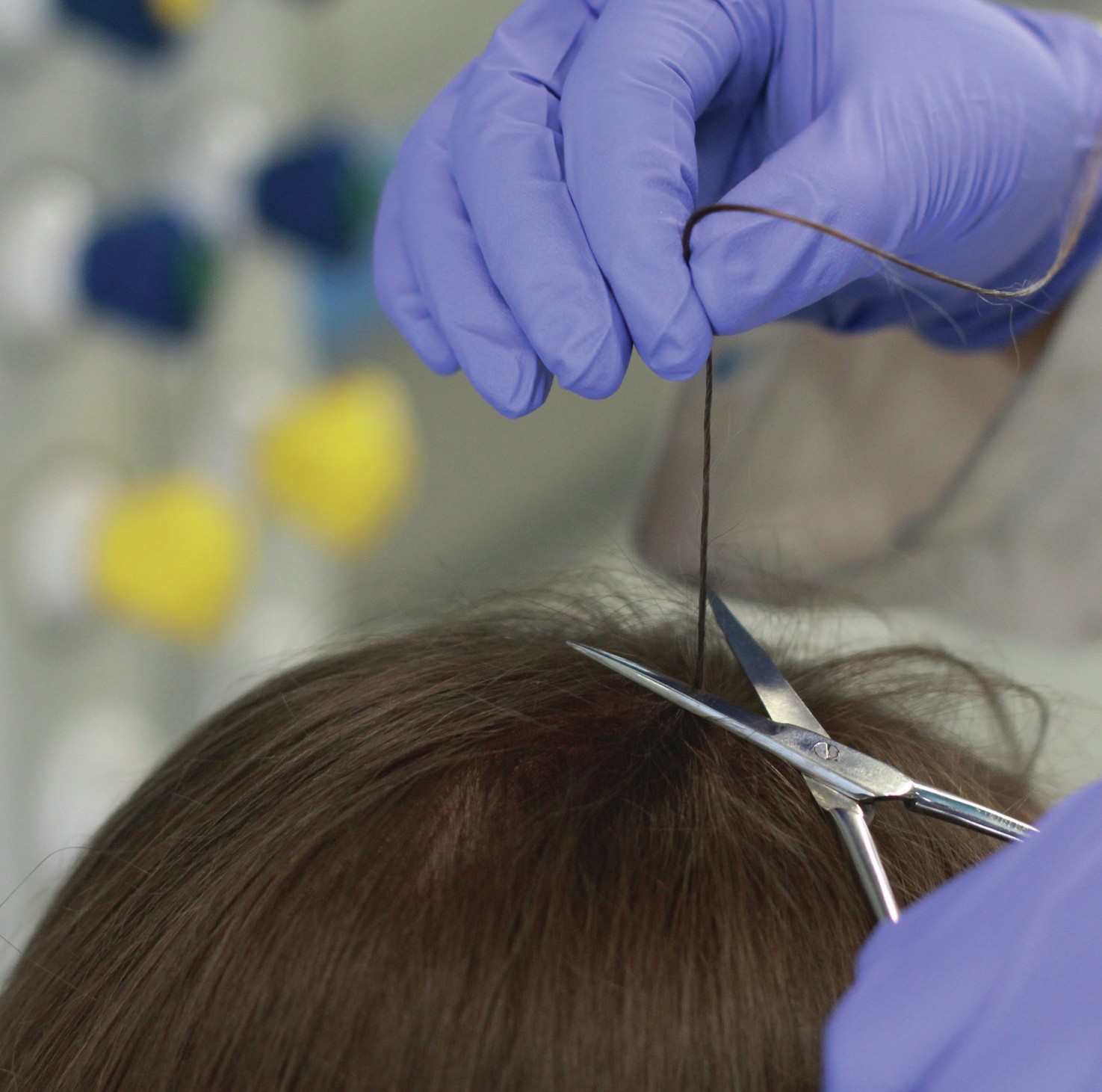
Drug-facilitated crimes, such as sexual assault or robbery, often involve suspected use of hypnotic, anaesthetic or abusive drugs on the victim, such as benzodiazepines or gamma-hydroxybutyric acid (GHB, 4-hydroxybutyric acid). However, these drugs are quickly eliminated from the body, so unless blood and urine samples are taken within a few hours of a drug being administered, it may not be detectable. This is a significant problem, as many drug-facilitated crimes are not reported until days after the event, often due to disorientation and amnesia of the victim caused by the effects of the drug. To overcome this problem it is increasingly common for hair to be analysed, as drugs incorporated into hair can be detected using gas chromatography-mass spectrometry (GC-MS, see CHEMISTRY REVIEW, Vol. 21, No. 4, p. 5) or liquid chromatographymass spectrometry (LC-MS), which can detect very low drug concentrations.
Four to five weeks after the offence has been committed, hair samples are collected from close to the scalp at the back of the head, cut into 2 cm lengths and sealed in a sterilised container. As hair grows from the root, the distance along the hair can be associated with a particular time frame, which may be linked to the alleged offence. The precise treatment of the hair depends on which drug is being tested for, but in general the hair is decontaminated and cut into shorter segments before extracts are made using appropriate solvents.
Your organisation does not have access to this article.
Sign up today to give your students the edge they need to achieve their best grades with subject expertise
Subscribe




